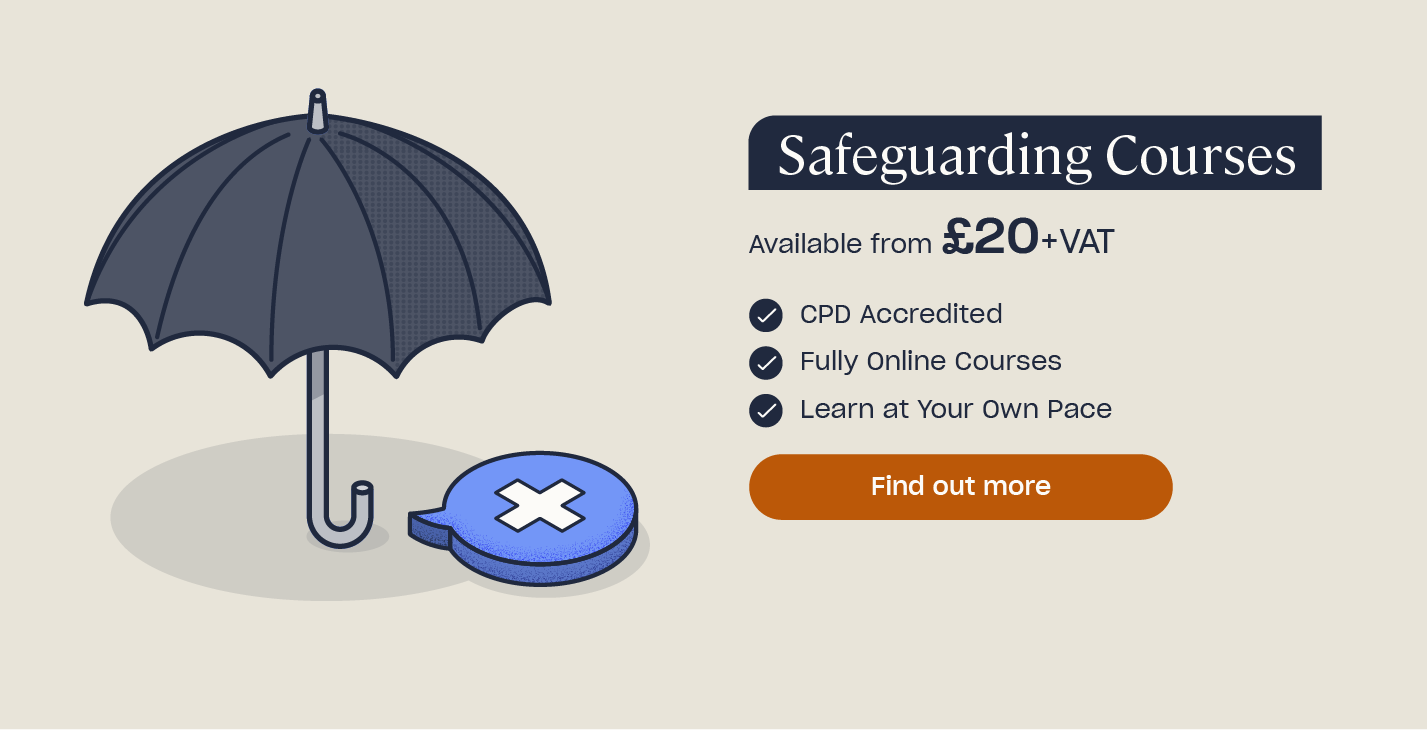What is Fabricated and Induced Illness?
Whether you work in the health and social care industry, care for or teach children, or would like to raise your awareness of child welfare issues, it is important to understand and recognise what both fabricated and induced illness (FII) is, and how to spot the signs that it is taking place.
In this article, we’ll look at what FII is, along with who commits this type of abuse and why. We’ll also discuss how to recognise the signs, and how to respond if FII is suspected. We will offer guidance on appropriate next steps for those in roles such as nursery workers, teachers, or medical professionals.
What is Fabricated and Induced Illness?
Fabricated or induced illness (FII), is a rare form of child abuse and used to be known as “Munchausen’s syndrome by proxy.” It occurs when a parent or carer purposefully exaggerates or causes a child to present with symptoms of ill health. Typically, the perpetrator tries to convince medical professionals that the child is either ill when they are not, or that their existing condition is far worse than it actually is.
Whilst the reasons behind a parent or carer fabricating or inducing illness in a child are not entirely understood, a history of mental health issues or previous traumatic experiences may be responsible for their behaviour. There are also two likely motivations behind FII, although there are always exceptions. These are:
- The parent or carer may experience a gain from the recognition and treatment of their child seeming unwell. This fulfils their own needs, such as their need for attention, sympathy, financial gain or additional support.
- The parent or carer may not intentionally cause harm or falsify symptoms, they may just incorrectly believe their extreme concern about their child’s health is justified.

Whilst it should be noted that not everyone who experiences these issues will go on to commit abuse, the NHS lists some potential reasons behind parents and carers fabricating or inducing illness in a child. These include:
Child abuse – experiencing physical and sexual abuse during childhood has been found to have occurred in certain people who have perpetrated FII. However, most people who suffer childhood abuse do not go on to abuse their own children.
Previous medical history – some cases of FII involve a mother who has experienced the death of another child, or had a difficult pregnancy. It is not uncommon for those committing this abuse to have a history of self-harm or misusing substances.
Personality disorder – many parents and carers involved in FII have a personality disorder – particularly borderline personality disorder (BPD). This type of mental health problem involves a person experiencing a distorted way of thinking and also affects how they perceive themselves and others. They often present with emotional instability, disturbed thinking, impulsive behaviour, and have intense but unstable relationships with others.
Some of those involved in FII described feeling resentment toward a child because they have a happier childhood than they themselves experienced. Others feel the sense of reward and gain that comes from having an ‘ill’ child.

Anxiety disorder – having anxiety can cause a parent or carer to have unnecessary worries about the child’s health. Whilst they may have genuine concerns and motivations, their behaviour can also cause harm to the child – such as having to go through tests and treatments that are not required or being made to believe they are ill and having disruption to their education. The parent or carer may also display health anxiety about themselves.
Somatic symptom disorder – those with somatic symptom disorder (or somatoform disorder) experience genuine pain or other symptoms that are caused by underlying emotional difficulties and not physical health conditions. Some of those found committing FII have been reported as having this disorder.
Regardless of the reasons behind this type of abuse, confirmed or suspected cases of FII are a safeguarding issue and must be addressed effectively and appropriately. Safeguarding is everyone’s responsibility, but those in a position of care must have the appropriate level of training and understanding of their role in order to keep children safe.
Want to Learn More?
If you need to update, refresh or increase your level of Safeguarding knowledge, we have a range of Safeguarding Training Courses available to suit those working in a variety of settings with either adults or children.
What Type of Abuse is Fabricated Illness?
We have mentioned that FII is a rare form of abuse, predominantly affecting children and often perpetrated by mothers. However, it can also take place against adults at risk of harm or abuse who are exploited by their main caregiver.
It can be hard to categorise the exact type of abuse involved in FII, as it can involve various elements. The child could suffer from neglect along with physical and emotional abuse, or there may be little or no harm done to the child if those fabricating illness can achieve their goals, depending on their motivation, without it being necessary.
Those fabricating or inducing illness in a child have often been found to:
- Falsify documents.
- Withhold treatment or incorrectly treat genuine conditions so they get worse.
- Exaggerate, distort or lie about the type or severity of the child’s symptoms, their medical history, test results or diagnoses.
- Try and persuade healthcare professionals that their child is ill when they’re healthy.
- Manipulate clinical tests to fake evidence of illness, for example, contaminating urine samples by adding blood or sugar.
- Poison the child with unsuitable and non-prescribed medicine. This can include low toxicity drugs such as laxatives so the child displays certain symptoms. Likewise, certain chemicals may be applied to the child’s skin to create irritation.
- Infect wounds with dirt or faeces. These contaminants may also be injected into the child.
- Suffocate the child to induce unconsciousness.
- Cause the child to have poor physical development by withholding food.
Increasing your understanding of the different types of abuse and exploitation involved in FII can make you better able to recognise when it might be taking place.

How to Recognise the Signs of Fabricated and Induced Illness
Fabricated or induced illness can involve a wide range of symptoms and behaviours, from exaggerating or inventing symptoms (fabricated), to deliberately making the child ill (induced).
Inducing an illness in a child is a rarer occurrence than fabrication, therefore, it is more likely that the perpetrator would wrongly report symptoms than make the child physically unwell. For conditions that can be difficult to diagnose, this can mean situations where a medical professional may find it hard to distinguish between cases of FII or genuine illness.
This can be a complaint of those struggling to get an autism diagnosis for their child, with the parent or carer often describing a scenario where they feel as if they are thought to be ‘making things up’ regarding the child’s health and/or behaviour.
However, medical professionals will always assume the parent or carer is acting in the child’s best interests unless there is strong evidence to suggest otherwise.
If, after carrying out examinations and tests, there appears to be no explanation for the child’s symptoms, FII may be suspected. It is important to ensure a professional duty of care and safeguarding responsibility is met at all times.
For further details, take a look at the NICE guidance on when to suspect child maltreatment in under 18s.
Owing to the different behaviours that can be involved in cases of FII, the varying forms of abuse can be hard to recognise. There are, however, warning signs you should look out for, such as:
- The parent or carer is always present when symptoms appear, and/or are the only ones who claim to notice the symptoms.
- The symptoms do not seem likely. For example, the child may present as being well but the parent or carer states that they have suffered heavy blood loss.
- The child does not improve or respond to medicine or other treatment as they would be expected to.
- The parent or carer may start to report new symptoms once other issues have been dealt with.
- The child may be restricted beyond the requirement of their illness or condition. They may be kept off school or encouraged to be mobilised in a wheelchair despite being able to walk.
- The continued pushing for further tests or treatments (often painful or invasive ones) by the parent or carer, even if a treatment plan has already been recommended.
- There is a history of taking the child to different hospitals and regularly changing GPs. A particular warning sign is if this occurs after the parent or carer has been challenged by medical staff.

Being aware of the warning signs and understanding how the behaviours of those perpetrating FII are impacting the child, is the first step in being able to get everyone involved the right protection, help and support.
Guidance on Fabricated Illness and How to Help
Fabricated and induced illness is a serious safeguarding issue. If you work for an organisation – either paid or voluntarily – and they have safeguarding policies and procedures in place, you must follow their guidance in dealing with any safeguarding concerns.
However, it may be useful to know that if FII is suspected:
- Medical professionals may need to liaise with both social services and the police, following local child safeguarding procedures at all times. The NHS can not deal with safeguarding concerns on its own.
- Childcare workers, including nursery workers and teachers, should inform the designated person within the organisation responsible for child safeguarding issues. The supervisor or manager should be able to inform you who this is if you are unsure.
- You should not confront someone you know personally if you suspect they may be fabricating or inducing illness in a child. It may give them the opportunity to dispose of any evidence of abuse and they are unlikely to disclose any guilt.
As a civilian, your local social services department can be contacted if you have any concerns, or the NSPCC’s child protection helpline 0808 800 5000 is open 8am to 10pm Monday to Friday, and 9am to 6pm on Saturday and Sunday and can offer you further advice.

The first and foremost priority is the safety of the child and the restoration of their health and wellbeing. The severity of the abuse sustained and the circumstances involved will inform the next steps to be taken. Managing these cases can involve health professionals, the local authority, children’s social care team, psychologists, education staff, and the police.
In severe cases, it may be necessary to remove the child from the parents’ care – temporarily or permanently – or for criminal charges to be brought against the perpetrator.
However, the best outcomes are achieved when the parent or carer understands and recognises the harm they’ve caused, communicates the underlying motivations that led to them fabricating or inducing illness, and willingly works with all professional parties involved.
There will likely be a need to focus on and support both the child’s mental health and the parent or carer’s mental health.
Health, education, care and legal systems will all have their protocols to follow based on the circumstances, but regardless of whether children’s social services are required to be involved or not, healthcare professionals should create a health and education rehabilitation plan to help resolve the situation and support the child with their recovery.
Awareness, understanding and recognition of fabricated and induced illness in both children and adults at risk is essential to ensure they are successfully safeguarded. Their right to be cared for and supported with dignity and live a life free from risk of harm and abuse should be respected at all times.
Further Resources:
- Mental Health Resource Pack for Schools
- Creating a Safeguarding Policy – Example Template for Schools
- Autism Awareness Training Course











